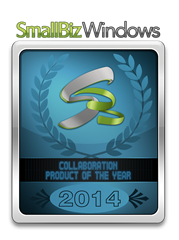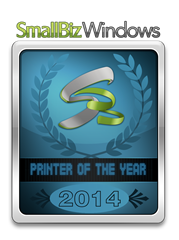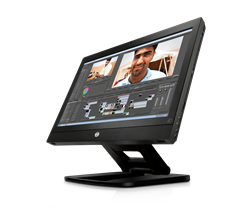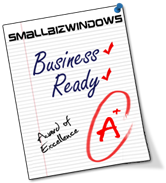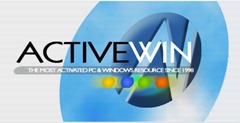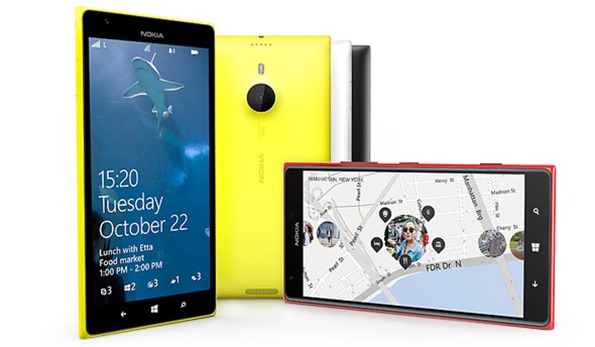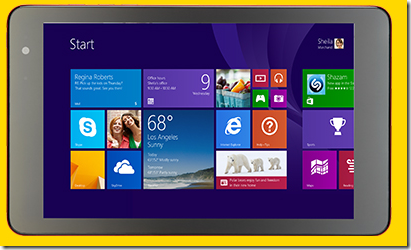The HP Proliant MicroServer Gen8 is the best performing, and without a doubt. the best value, entry-level server you can buy
 In the very small SMB space, users historically have not had many choices when it comes to getting a perfect fit for a business server.
In the very small SMB space, users historically have not had many choices when it comes to getting a perfect fit for a business server.
As a result, they have had to either under-resource their server needs with a re-purposed desktop PC, or overprovision with a powerful server where capacity utilization never exceeds 20% even at peak.
A couple of years ago, HP declared “No mas” to the dismal state of affairs and released the first P Proliant MicroServer G7.
Widely received and praised, the Proliant MicroServer was, for us a success, and a very worthy box capable of powering our backup storage requirements when running Windows Storage Server.
However, it was somewhat underpowered.
HP listened, and at HP Discover 2013, Jim Ganthier, VP of Global Marketing for HP Servers debuted the new, more powerful MicroServer Gen8.
HP Proliant MicroServer Gen8
 One of the reasons why we use HP Proliant servers exclusively is that there is a considerable amount of R&D and IP that goes into the systems.
One of the reasons why we use HP Proliant servers exclusively is that there is a considerable amount of R&D and IP that goes into the systems.
That gives me, and by proxy, my clients, the confidence that their server is not just a box slapped together in the back of some mini-mall storefront.
Proliant MicroServer is a recipient of that technology investment.

-
HP iLO (Firmware: HP iLO 4)
-
ECC DDR3 RAM
-
HP Dynamic Smart Array B120i Controller
-
HP iLO Remote
-
Management Network Port
-
1Gb Dedicated (default iLO4 configuration)
-
Micro SD slot 1 Internal
-
USB 2.0 Ports 5 total (2 front, 2 rear, 1 internal)
-
USB 3.0 Ports 2 total (2 rear)
-
Network RJ-45 (Ethernet) 2 (Port 1 shared for HP iLO4 as optional configuration)
 Using the MicroServer Gen8
Using the MicroServer Gen8
To adequately review the Proliant MicroServer Gen8, we derived the following test scenarios
-
A review at The Orbiting O’Odua to see if it could replace my trusty HP Proliant ML110 Gen6
-
As the file and EMR/EHR server at a an endocrinologist’s clinic here in Colorado
-
At the primary server for a bookkeeper’s office in Riverside County, California, and
-
As the server for a contract dressmaker in downtown Los Angeles.
We used Microsoft Windows Server 2012 for the entire testing unless otherwise noted.
Proliant MicroServer Gen8 at The Orbiting O’Odua
The MicroServer faced a very hard task here: replace a very capable Proliant tower server, and do it easily, and flawlessly.
The ML110 G6 here has a very simple task: run the personal network ring here, and serve media content to all devices authorized to be there.
I loaded the MicroServer Gen8 with (4) 3 TB drives, and used the SmartArray controller to create large enough volumes. Server 2012 with Active Directory was installed, and the Desktop Experience Pack was applied.
I then transferred 2 TB of media from a Storage Server to the carved-out volumes.
Do not be fooled: the relatively small size of the ultra-compact MicroServer Gen8 hides some great tech!
USB 3.0 and 2.0 slots are aplenty. Two NICs. iLO4.
For the personal ring here, MicroServer Gen8 served three HP Tablet PCs running a mix of Windows 8.1 Preview and Windows 8, 2 Surface Pros and a SurfaceRT, one HP TouchSmart AIO, and a Lenovo M90z AIO, both running Windows 8.
I hate to admit it, but Proliant MicroServer Gen8 is a much more capable server than the entry-level ML110 G6.
It constantly server up the media and data we needed here, often multiple HD streams. Better than that, the fan almost never had a need to speed up.
For the entire month of testing at The O’Odua, this device excelled.
I will be replacing the ML110 G6 with a MicroServer.
It is that much better.
Proliant MicroServer at a an endocrinologist’s clinic in Colorado
This clinic presented its own set of issues. The EMR used by the endocrinologist is local, and does not work with AD. The EHR is cloud-based. That clinic only has five devices.
Their current ‘server’ is a white box type built locally in Denver. It is chock full of fans, is very noisy, and seems to fail with regularity. Furthermore, the box builder has been pressing the doctor to pull the trigger on a $5,000+ replacement.
Currently, the doctor is in the process of validating a combined EMR/EHR package for his clinic. However, that will not be implemented until the second quarter of 2014.
In the interim, he is stuck with a solution that is old and slow.
Into this came MicroServer Gen8.
We installed it there, set policies that restricted file saves to it, and moved [a copy of] the EMR over.
MicroServer Gen8, despite its diminutive size, impressed both the doctor and his administrative/clerical staff.
Throughout the time that MicroServer was there, the clinic did not experience any failure or outage of their EMR.
That alone, coupled with the price, sold the clinic on this solution.
MicroServer Gen8 at a bookkeeper’s office in Perris, California
Back in the day, this gentleman ran one of the businesses I had sold my video store management software system to. He later sold that business during Blockbuster Video’s rollup of local video stores, and defaulted to bookkeeping.
Since money talks, I forgave him, and sold him the first computer for his bookkeeping service as well. I have supplied him with systems as the years have gone by.
With 14 systems, George’s firm is just outside the target demo for MicroServer Gen 8. However, most computing is performed at the individual user workstations, resulting in the need for a basic file-and-print server.
For him, the MicroServer Gen8 seemed ideal, despite my inner voice telling me he had 14 users, some of them with multiple devices, though a) not all of them worked at that office simultaneously, and b) not all devices would be concurrently connected.
We installed MicroServer, and the number people went to work.
At the end of the test, George had nothing but gushing praise for the Proliant MicroServer Gen8, his only concern being if it could continue to perform as he adds more bodies during tax season.
I gave him a QED on that.
Proliant MicroServer Gen8 at a dressmaker’s factory in Los Angeles
My friend Cara is a contract dressmaker in the Fashion Alley located in downtown Los Angeles.
Over the past years, her small dressmaking business has grown more computerized, to the extent where she is now sort of a project manager for not just her employees, but for a loose group of several other contract dressmakers.
In order to manage her business, she needs a server to keep everyone in check.
With MicroServer Gen8, I finally had a server I felt confident enough about to recommend to her.
I installed MicroServer Gen8 with Active Directory there to help manage the business. Eleven PCs were connected to the server.
All the sketches she uses are saved there, and I used the same trusty HP StorageWorks DAT160 backup drive for backup.
For the duration of the test, the factory worked as expected.
Cara had two concerns going in. the paramount importance, and one that she grapples with daily, is the safety of the designs entrusted to her by her designer partners. Secondly, she was concerned about the availability of designs to her workers if they were saved to a central location.
MicroServer Gen8 solved all this, and more. Not only has she been able to get peace of mind from the device, but she was also able to perform backups easily and automatically, a process that previously required manual input and babysitting.
They saw the light
All three businesses will be getting a Proliant MicroServer Gen8.
Since the physician is located over three hours away from me, I defined a MicroServer solution for him to purchase, and have his local guy maintain. I will maintain oversight over his operations, checking in from time to time.
George had been a client of ours for nearly 24 years, and has absolutely refused to have anyone else manage his computing, and Cara is a friend. As a result, despite the fact that they are much smaller than our baseline of a minimum of 75 seats, we will manage their needs.
Both businesses will get a Proliant MicroServer with external RDX backup drives. I had thought of using the DAT drives, but I’m sure that solution is at end-of-life. They will also automagically get backed up to SkyDrive Pro.
 Summary
Summary
Be delivering a solution that targets a long ignored business segment with a very good, and extremely capable device, HP is once again bent on moving the goalposts, and improving their lead in servers.
HP Proliant MicroServer Gen8 is that tool.
In our tests, it proved quite able to perform all the jobs we tasked it with. It was fast, silent, and with the full complement of internal storage, the perfect server for a small business.
For me, it was easy to implement and manage. In fact, I do not see the insertion of Proliant MicroServer Gen8 as more than a half-day job if data migration is not needed.
This is a very good entry-level server.
Conclusions
 Bottom line: we like the HP MicroServer Gen8.
Bottom line: we like the HP MicroServer Gen8.
For 15 or less users, it is perfect. In homes, it truly zings, serving up multiple HD streams when coupled with the conformal 1810 switch. It is perfect for the very small SMBs as their only and/or primary server, and quite useful in larger SMBs as a RAID’d as a storage server.
We are recommending it without reservation for any small business.
Based on our testing, I can also declare that the HP Proliant MicroServer Gen8 is the very best entry-level server I have ever worked with, and worked on. In addition to its performance and ergonomics, the server is very aggressively priced, bringing to bear a winning combination of brains, beauty, and value.
As a result, we are bestowing it the SmallBizWindows Superstar Award, and making it a candidate for our 2014 Product of the Year selection.
This, is the MicroServer we have all been waiting for!
© 2002 – 2013, John Obeto for Blackground Media Unlimited




